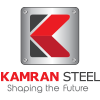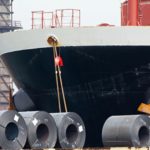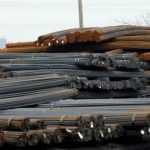The steel making industry is widely known to be one of the world’s most energy demanding sectors. As the cost of energy grows, the concern about environmental degradation, as well as the interest to minimize carbon footprints turns the focus of steel fabricators to waste heat recovery systems (WHRS) as a life-altering salvation.
Kamran steel has become a leader in Pakistan through its use of modern furnace technology and seeking out waste heat recovery systems in the quest to create a more efficient energy system. It not only fits into the climate roadmap of the country, but also creates Kamran Steel as a progressive company related to sustainable steel manufacturing.
What is Waste Heat Recovery (WHR)?
Waste heat recovery (WHR) is the recovery and reuse of waste heat produced as a by-product in any industrial manufacturing process but most commonly high-temperature processes such as steelmaking.
Rather than losing useful heat into atmosphere, the WHR systems use heat to produce useful energy like:
- Electricity Steam Electricity generation steam
- Plant operation hot water
- Furnace air preheated
The invention contributes to cutting down the reliance on fossil resources and the general cost of production.
The need of Steel Plants in Waste Heat Recovery
Furnaces, rolling mills, and re-heating systems are some of the biggest energy consumers and enormous amounts of waste heat is produced in steel plants. This energy is dead without a recovery leading to a rise in operational and carbon emissions.
Main Advantages of WHR in the Steel Plants:
- Better Energy Efficiency: WHR systems can maximize up to 25-30 percent of otherwise lost heat to markedly reduce energy usage.
- Cost Savings: Fuel will be decreased resulting in fewer production costs.
- Sustainability: Greenhouse emitting gas emissions are reduced, and climate-friendly production is encouraged.
Increased Competitiveness Energy-use steel products will be appealing to the environmentally inclined markets.
Sources of Waste Heat in Steel Plants
| Source | Type of Heat Lost | Potential Use After Recovery |
| Furnace exhaust gases | High-temperature heat | Power generation, preheating air |
| Rolling mills | Medium to high heat | Steam generation, electricity |
| Cooling systems | Low to medium heat | Steam for internal processes |
| Hot surfaces & steam leaks | Low-grade heat | Heating water, space heating |
How to Produce Energy by Recovering Waste Heat
1. Waste Heat to Power
Collected heat may be utilised in the form of electricity by the means of steam turbines or Organic Rankine Cycle (ORC). This lessens reliance on the sources of outside power and slashes power charges.
2. Heating Raw Materials
Catchment is common in the preheating of scrap metal, iron ore, or combustion air, which enables a reduction in in-furnace energy consumption
3. Internal steam production
The steam was produced internally and used in these applications.The energy requirement of the steel plant is also saved since, in the WHR systems, the steam produced can be recycled to other industrial processes again in the steel plant.
4. Reduction of Green House Gas Emission
WHR systems indirectly reduce CO 2 emissions by means of decreasing fuel consumption, making them useful in leading steel firms such as Kamran steel to comply with the Climate Roadmap of Pakistan. More details on Kamran Steel’s quality assurance and sustainability efforts can be found on their Quality Assurance page.
Benefits of Waste Heat Recovery
| Benefit | Impact on Steel Plant Operations | Environmental Impact |
| Energy cost reduction | Lowers electricity & fuel bills | Reduces dependency on fossil fuels |
| Power generation | Ensures self-sufficiency | Cuts carbon emissions |
| Preheated raw materials | Improves furnace efficiency | Less fuel consumption |
| Sustainable branding | Enhances global competitiveness | Supports climate goals |
Kamran Steel in Adoption of WHR Systems
Since it was established, Kamran Steel has led the way in the use of energy efficient technologies in the Pakistani steel industry. Kamran Steel has managed to combine waste heat recovery in its operations in order to:
- Reduces the expenditure on electricity by generating own energy.
- Cuts down carbon emission, which promotes sustainable urban development.
- Meets international standards of green steel, and this enhances its competitiveness globally.
- Support the renewable and efficiency objectives of Pakistan to help provide a cleaner industrial future.
Case Study: WHR in Steel Plants -Global Success Story
- Japan: Top steel businesses are saving millions of dollars per year using state of the art WHR systems.
- China: More than 60 percent of large scale steel industries have incorporated WHR, and as a result the national energy consumption has plummeted sharp down.
- Europe: WHR is highly present in the EU roadmap on decarbonization.
Kamran Steel is playing to be amongst these leaders and ensure the steel industry in Pakistan is not left behind during this change to green manufacturing.
Conclusion: Waste Heat The Future of Steelmaking
Recovery of waste heat is not only a cost-saving concept but a game changer in the steel business. WHR represents a viable answer, not only in monetary terms, in Pakistan, where the costs of energy are high and environment awareness is growing. For more information on sustainable practices like steel scrap management, visit their Steel Scrap Management page.
With the adoption of WHR systems, Kamran Steel is providing an example to other companies, in that energy efficiency and sustainability can be one. When Pakistan is on its path toward net-zero commitments, the technologies will be crucial in developing a more green future with the industry.





Recent Comments